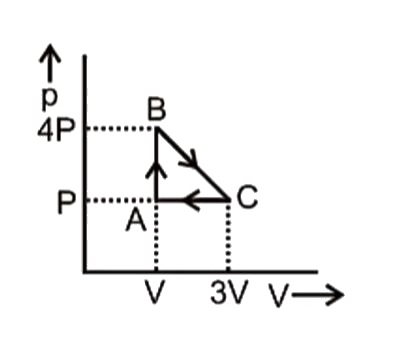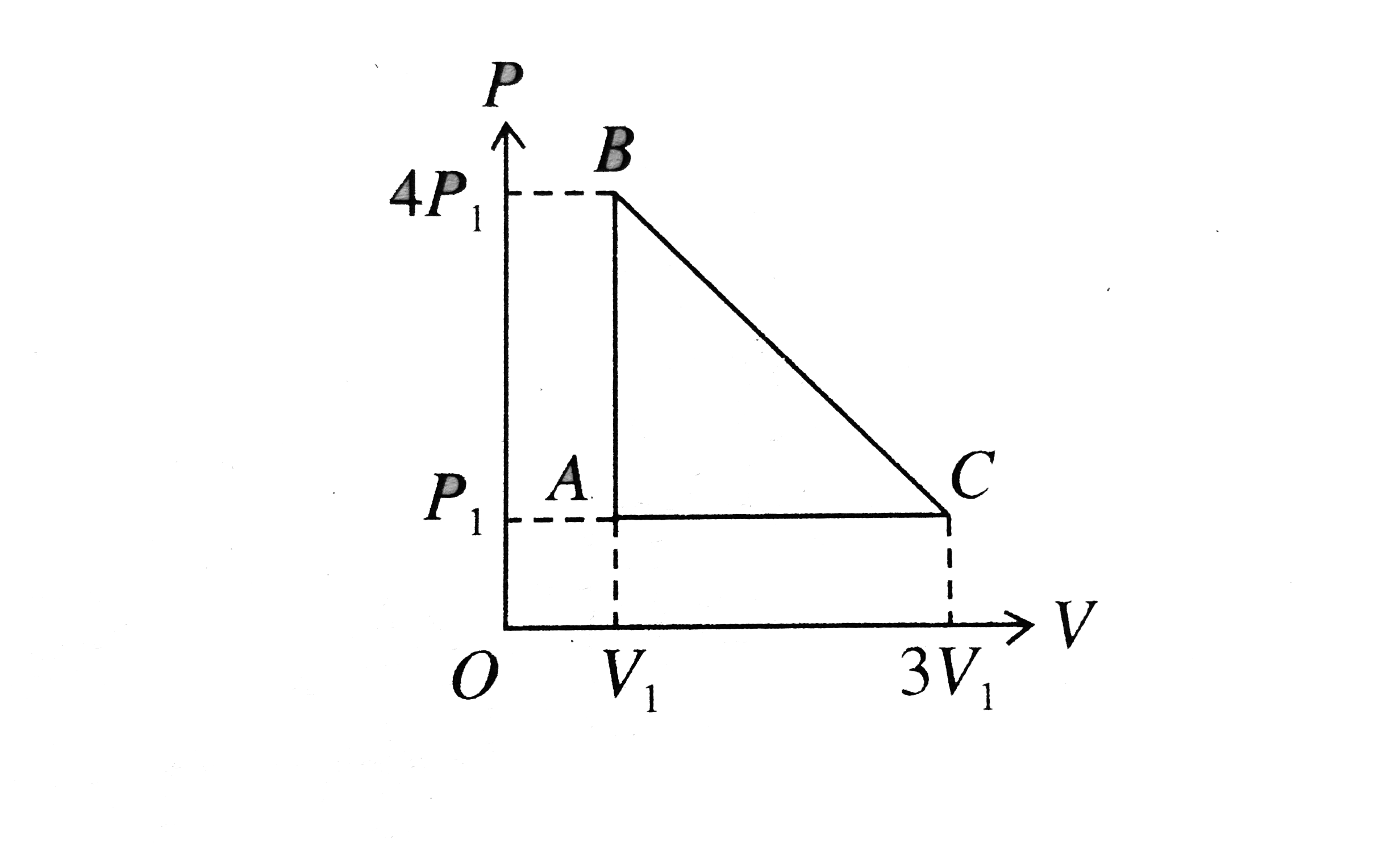Draw a Carnot cycle and on the diagram mark the work done by the engine.
To solve the question of drawing a Carnot cycle and marking the work done by the engine, we will follow these steps:
1. Draw the Axes:
- Start by drawing a rectangular graph. Label the vertical axis as "Pressure (P)" and the horizontal axis as "Volume (V)".
2. Identify the Four Processes:
- The Carnot cycle consists of four distinct processes:
- Process 1: Adiabatic Compression (from point A to point B)
- Process 2: Isothermal Expansion (from point B to point C)
- Process 3: Adiabatic Expansion (from point C to point D)
- Process 4: Isothermal Compression (from point D back to point A)
3. Draw the Adiabatic Compression:
- From point A, draw a curve that slopes downwards to the right towards point B. This represents the adiabatic compression process.
4. Draw the Isothermal Expansion:
- From point B, draw a curve that slopes upwards to the right towards point C. This represents the isothermal expansion process.
5. Draw the Adiabatic Expansion:
- From point C, draw another curve that slopes downwards to the right towards point D. This represents the adiabatic expansion process.
6. Draw the Isothermal Compression:
- From point D, draw a curve that slopes downwards to the left back to point A. This represents the isothermal compression process.
7. Label the Processes:
- Label each segment of the cycle with its respective process:
- A to B: Adiabatic Compression
- B to C: Isothermal Expansion
- C to D: Adiabatic Expansion
- D to A: Isothermal Compression
8. Mark the Work Done:
- The work done by the engine during the Carnot cycle is represented by the area enclosed by the cycle on the P-V diagram. Shade this area to indicate the work done by the engine.
Final Diagram:
- You should have a closed loop on the P-V diagram with each process labeled and the area enclosed shaded to represent the work done.
- Start by drawing a rectangular graph. Label the vertical axis as "Pressure (P)" and the horizontal axis as "Volume (V)".
- The Carnot cycle consists of four distinct processes:
- Process 1: Adiabatic Compression (from point A to point B)
- Process 2: Isothermal Expansion (from point B to point C)
- Process 3: Adiabatic Expansion (from point C to point D)
- Process 4: Isothermal Compression (from point D back to point A)
- From point A, draw a curve that slopes downwards to the right towards point B. This represents the adiabatic compression process.
- From point B, draw a curve that slopes upwards to the right towards point C. This represents the isothermal expansion process.
- From point C, draw another curve that slopes downwards to the right towards point D. This represents the adiabatic expansion process.
- From point D, draw a curve that slopes downwards to the left back to point A. This represents the isothermal compression process.
- Label each segment of the cycle with its respective process:
- A to B: Adiabatic Compression
- B to C: Isothermal Expansion
- C to D: Adiabatic Expansion
- D to A: Isothermal Compression
- The work done by the engine during the Carnot cycle is represented by the area enclosed by the cycle on the P-V diagram. Shade this area to indicate the work done by the engine.
- You should have a closed loop on the P-V diagram with each process labeled and the area enclosed shaded to represent the work done.
Topper's Solved these Questions
- INTERNAL ENERGY BOOK - ICSECHAPTER - INTERNAL ENERGY EXERCISE - VERY SHORT ANSWER QUESTIONS
17 Videos
- INTERNAL ENERGY BOOK - ICSECHAPTER - INTERNAL ENERGY EXERCISE - SELECTED PROBLEMS (FROM FIRST LAW OF THERMODYNAMICS )
6 Videos
- INTERNAL ENERGY BOOK - ICSECHAPTER - INTERNAL ENERGY EXERCISE - LONG ANSWER QUESTIONS
8 Videos
- GRAVITATIONBOOK - ICSECHAPTER - GRAVITATIONEXERCISE - FROM THE HUBBLE TELESCOP
2 Videos
- MOTION IN FLUIDS BOOK - ICSECHAPTER - MOTION IN FLUIDS EXERCISE - SELECTED PROBLEMS (FROM POISEUILLE.S FORMULA)
19 Videos
Similar Questions
A carnot cycle consists of
View SolutionA carnot cycle consists of
View SolutionA carnot cycle consists of
View SolutionDraw the diesel cycle and give the name of the four strokes. Show the work done by the engine on the diagram
View SolutionAn ideal gas is taken around the cycle ABCA as shown in the P-V diagram. The total work done by the gas during the cycle is

View SolutionAn ideal gas is taken around the cycle ABCA shown in P−V diagram. The net work done by the gas during the cycle is equal to

View SolutionAn ideal gas is taken around the cycle ABCA shown in P−V diagram. The net work done by the gas during the cycle is equal to

View SolutionAn ideal gas is taken around the cycle ABCD shown in the PV diagram below. The net work done by the gas during the cycle is equal to

View SolutionA carnot engine works between temperatures 327∘C and 27∘C. If the engine takes 1600 J of heat from the higher temperature reservoir, the work done by the engine per cycle (in Joule) is equal to __________.
View SolutionA carnot engine takes in 3000 kcal of heat from a reservoir at 627∘C and gives a part of it to a sink at 27∘C. The work done by the engine is
View Solution
